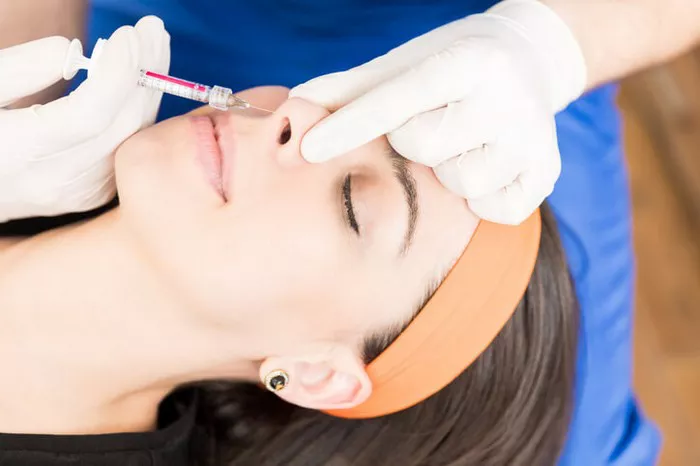Breast augmentation is a popular cosmetic procedure that aims to enhance the size, shape, and symmetry of the breasts. As with any surgery, patients undergoing breast augmentation are curious about the recovery process and the time it takes for the breasts to settle into their final position. One common concern is the timing of when the breasts will “drop” after the procedure. In this article, we will explore the factors that influence breast dropping, the typical timeline for breast settling, and the importance of patience and proper post-operative care for achieving optimal results.
Understanding Breast Augmentation
Breast augmentation involves the use of implants to enhance the size and fullness of the breasts. It is an individualized procedure that takes into account the patient’s body type, breast anatomy, and desired outcomes. The implants can be placed either above or below the chest muscle, and various incision techniques are used based on the surgeon’s recommendations and patient preferences.
After the surgery, the breasts will undergo a healing process, and the surrounding tissues will adapt to the presence of the implants. It is essential to allow adequate time for the body to adjust to the changes and for the breasts to settle into their final position.
Factors Influencing Breast Dropping
The process of breast dropping, also known as breast implant settling, is influenced by several factors:
a. Implant Placement: The position of the implants, whether above or below the chest muscle, can impact how quickly the breasts drop. Submuscular implants may take longer to settle due to the added support of the muscle.
b. Implant Size and Type: The size and type of implants used play a role in how the breasts settle. Larger implants or those with a more significant projection may require more time for the tissues to stretch and accommodate them.
c. Skin Elasticity: The elasticity of the patient’s skin affects how the breasts adapt to the implant’s presence. Patients with good skin elasticity may experience faster breast dropping.
d. Healing Process: Individual healing rates can vary, and some patients may experience a faster recovery and breast settling than others.
The Timeline for Breast Dropping
Breast dropping is a gradual process that occurs over several weeks to months after the surgery. Immediately after the procedure, the breasts may appear higher and feel firm due to swelling and the tightness of the surrounding tissues. Over time, as the swelling subsides and the tissues relax, the implants will start to settle into a more natural position.
Typically, most patients will notice some initial changes in breast appearance within the first few weeks after surgery. By the third to sixth month, significant breast settling should have occurred, and the final breast position and shape become more apparent. However, it is essential to remember that the timeline can vary from person to person, and some individuals may experience continued changes for up to a year post-surgery.
The Importance of Post-Operative Care
To support the breast dropping process and achieve the best possible results, patients must follow their surgeon’s post-operative care instructions diligently. This may include:
a. Wearing a Supportive Bra: Wearing a supportive, well-fitted surgical bra or sports bra can aid in maintaining breast position and reducing swelling during the healing process.
b. Avoiding Strenuous Activities: Patients should avoid heavy lifting, strenuous exercise, or any activity that may put stress on the healing breast tissues for the first few weeks after surgery.
c. Massage Techniques: Some surgeons may recommend gentle massage techniques to help the implants settle into a more natural position.
d. Follow-Up Visits: Regular follow-up visits with the surgeon allow for monitoring of the healing progress and addressing any concerns that may arise during recovery.
Managing Expectations
It is crucial for patients to have realistic expectations about the breast augmentation procedure and the timeline for breast settling. Each individual’s body responds differently to surgery, and patience is key during the recovery process. Minor asymmetries or irregularities are common during the early stages of healing and should improve as the breasts continue to settle.
If patients have concerns about their breast appearance or the progress of breast dropping, they should discuss them with their surgeon during follow-up appointments. Open communication with the surgeon can help address any questions and provide reassurance during the recovery period.
Conclusion
Breast augmentation is a transformative procedure that can enhance a person’s self-confidence and body image. The process of breast dropping, or implant settling, occurs gradually over several weeks to months after surgery. Factors such as implant placement, size, and individual healing rates can influence the timeline for breast settling.
To achieve optimal results and support the breast dropping process, patients should adhere to their surgeon’s post-operative care instructions and be patient during the recovery period. Regular follow-up visits with the surgeon allow for monitoring the healing progress and addressing any concerns.
Remember that every patient’s breast augmentation journey is unique, and final results will continue to evolve over time. By working closely with a skilled and experienced plastic surgeon, patients can achieve natural-looking and satisfying outcomes that align with their aesthetic goals.


